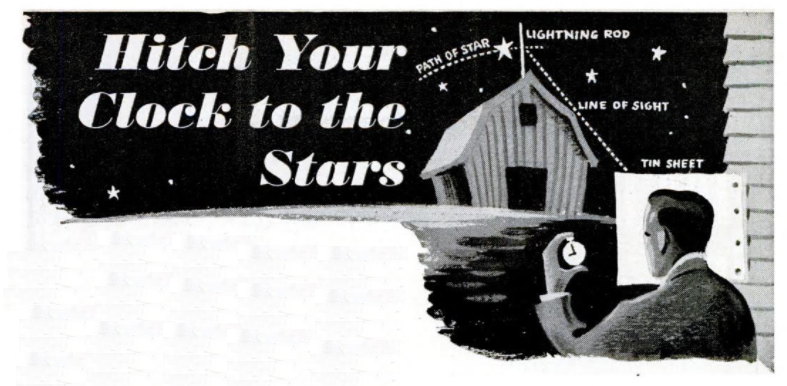 Seventy years ago, the October 1947 issue of Popular Science showed this method of making sure your watch was accurate.
Seventy years ago, the October 1947 issue of Popular Science showed this method of making sure your watch was accurate.
While this method would not, by itself, give you the exact time, it would very precisely tell you the elapsed time.
The method was very simple. You simply installed a piece of tin with 1/16 inch hole on some fixed location, such as the side of the building. You used it to sight a vertical fixed object, such as a lightning rod or distant skyscraper. Then, you observed the exact time that any star was occluded by the object. Since the star is essentially a point of light, it would disappear suddenly. You noted the time.
Then, the next evening, you would observe the same star. It would be occluded exactly 23 hours, 56 minutes, 4.09 seconds later–one sidereal day. In other words, the time on your watch should read exactly 3 minutes 55.91 seconds before the previous night’s figure. (For all practical purposes, a sidereal day is 364/365 of a solar day. This makes sense, since the Earth itself has moved 1/365 of its way around the sun in 24 hours.)
Depending on whether your watch was fast or slow, you could thus adjust the spring.
If you knew the exact time the first night, then you could also create a table showing the exact time of occlusion subsequent nights. As long as you didn’t move the piece of tin, you would always know what time it is.
This method has two applications. After the zombie apocalypse, presumably WWV will be off the air. The stars give you a method to keep your clock calibrated very accurately. It could also be the basis for a very interesting science fair project.
